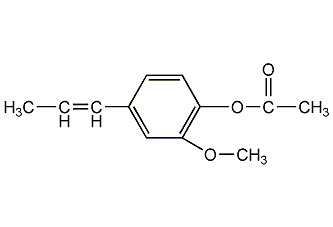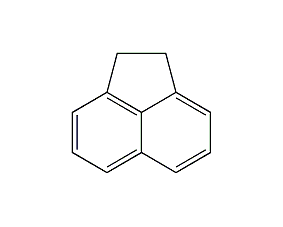
Structural formula
| Business number | 01JN |
|---|---|
| Molecular formula | C3H9N |
| Molecular weight | 59.11 |
| label |
Nitrogen-containing compound solvents, aliphatic compounds |
Numbering system
CAS number:75-50-3
MDL number:MFCD00008327
EINECS number:200-875-0
RTECS number:PA0350000
BRN number:956566
PubChem number:24889324
Physical property data
1. Characteristics: colorless, fish-oil-smelling gas. [1]
2. Melting point (℃): -117.2[2]
3. Boiling point (℃): 2.87[3]
4. Relative density (water=1): 0.66 (-5℃)[4]
5. Relative vapor density (air=1): 2.04[5]
6. Saturated vapor pressure (kPa): 187 (20℃)[6]
7. Heat of combustion (kJ/mol): -2443.1[7]
8. Critical temperature (℃): 161[8]
9. Critical pressure (MPa): 4.15[9]
10. Octanol/water partition coefficient :0.16[10]
11. Flash point (℃): 3.33; -12.2 (CC)[11]
12. Ignition temperature (℃): 190[12]
13. Explosion upper limit (%): 11.6[13]
14. Lower explosion limit (%): 2.0[14]
15. Solubility: soluble in water, ethanol, ether, benzene, toluene, xylene, Chloroform etc. [15]
Toxicological data
1. Acute toxicity[16]
LD50: 5000mg/kg (rat oral); 90mg/kg (mouse intravenous )
LC50: 2000ppm (rat inhalation, 1h); 19000mg/m3 (mouse inhalation)
2. Irritation No information yet
3. Others[17] LCLo: 3500ppm (rat inhalation, 4h)
Ecological data
1. Ecotoxicity No data yet
2. Biodegradability[18] MITI-I test , the initial concentration is 100ppm, the sludge concentration is 30ppm, and the degradation is 66%~92% after 2 weeks.
3. Non-biodegradability[19] In the air, when the hydroxyl radical concentration is 5.00×105 pcs/cm3, the degradation half-life is 9h (theoretical).
4. Other harmful effects[20] This substance is harmful to the environment. Special attention should be paid to the pollution of water bodies. .
Molecular structure data
1. Molar refractive index: 19.66
2. Molar volume (cm3/mol): 58.3
3. Isotonic specific volume (90.2K ): 177.1
4. Surface tension (dyne/cm): 18.6
5. Polarizability (10-24cm3): 7.79
Compute chemical data
1. Reference value for hydrophobic parameter calculation (XlogP): 0.3
2. Number of hydrogen bond donors: 0
3. Number of hydrogen bond acceptors: 1
4. Number of rotatable chemical bonds: 0
5. Number of tautomers: none
6. Topological molecule polar surface area 3.2
7.Number of heavy atoms���: 4
8. Surface charge: 0
9. Complexity: 8
10. Number of isotope atoms: 0
11. Determine the number of atomic stereocenters: 0
12. Uncertain number of atomic stereocenters: 0
13. Determine the number of chemical bond stereocenters: 0
14. Number of uncertain chemical bond stereocenters: 0
15. Number of covalent bond units: 1
Properties and stability
1. The chemical properties are typical of tertiary amines. For example: ① The aqueous solution is alkaline. It reacts with alkyl halides to form quaternary ammonium salts. It forms salts or complex salts with inorganic acids, organic acids, heavy metals, chlorides, etc. ② Tertiary amine salts are relatively stable. However, when in the free state, it is easier to oxidize than primary amines and secondary amines. It is relatively stable to acidic potassium permanganate and is easily oxidized to secondary amines by alkaline potassium permanganate. It reacts with persulfuric acid, hydrogen peroxide, organic peroxyacid, etc. to obtain amine oxygen-containing compounds. ③ Does not react with nitrous acid. ④ It reacts with cyanogen bromide to form an addition compound, but it is unstable and easily decomposes into alkyl bromide and dialkylamido cyanide. The latter hydrolyzes to form secondary amines. In addition, pyrolysis occurs when heated to 380~400°C, first generating methylamine, methane, etc., and secondly generating a large amount of nitrogen, ethane and hydrogen. Add activated carbon to the trimethylamine aqueous solution and blow in oxygen at 35°C to generate formaldehyde, dimethylamine, etc. Trimethylamine aqueous solution is unstable to light and decomposes to produce a variety of gaseous substances under ultraviolet irradiation at 100°C.
2. This product is poisonous. For animals: when inhaling trimethylamine, LD5019mg/L. According to the changes in the central nervous system state of rats, if the action time is 4 hours, the toxic effect threshold of trimethylamine is 0.025mg/L. For humans: olfactory threshold concentration is 0.002mg/L. Concentrated aqueous solutions of trimethylamine can cause severe burning and flushing of the skin. After washing away the solution, spotting of bleeding remains on the skin and pain may remain for a short period of time. The maximum allowable concentration of trimethylamine in the workplace is 5 mg/m3. Wear protective equipment and pay attention to safety when operating. Equipment requirements are strict. There is good local and general ventilation. Workers who produce and use trimethylamine should undergo regular physical examinations.
3. Stability[21] Stable
4. Incompatible substances[22] Strong oxidants, strong acids, halogens
5. Conditions to avoid contact [23] Heat
6. Aggregation hazards[24] No aggregation
Storage method
Storage Precautions[25] Store in a cool, ventilated warehouse dedicated to flammable gases. Keep away from fire and heat sources. The storage temperature should not exceed 30℃. Keep container tightly sealed. They should be stored separately from oxidants, acids, and halogens, and avoid mixed storage. Use explosion-proof lighting and ventilation facilities. It is prohibited to use mechanical equipment and tools that are prone to sparks. The storage area should be equipped with leakage emergency response equipment.
Synthesis method
1. The crude mixed methylamine produced by reacting methanol and ammonia (1:2.5) at high temperature (420°C) and high pressure (4900kPa) using activated alumina as a catalyst is fractionated to obtain trimethylamine. Formaldehyde can be used as raw material in small-scale production. During production, put ammonium chloride into the reaction pot, add formaldehyde dropwise while raising the temperature, and collect the evaporated product until the temperature rises to 148°C, which is the end point of the methylation reaction. Discharge to obtain trimethylamine hydrochloride ([593-81-7]). The steamed formaldehyde solution is set aside. Mix trimethylamine hydrochloride with sodium hydroxide solution and heat to 80°C to free trimethylamine gas.
Refining method: often contains impurities such as methanol, methylamine, and dimethylamine. It can be refined by extractive distillation or azeotropic distillation. To obtain pure trimethylamine, acetic anhydride or acetyl chloride can be added for distillation. Primary amines and secondary amines form acetyl compounds, which have high boiling points and are difficult to evaporate. After the distilled trimethylamine is treated with activated alumina, sodium fluorenone is added and dried for later use. In addition, pure dry gaseous trimethylamine can be obtained by passing it through a drying tower containing solid potassium hydroxide. To purify trimethylamine hydrochloride, you can recrystallize it from chloroform, ethanol, propanol or a mixture of benzene and methanol, and dry it in a vacuum desiccator filled with paraffin. 
Purpose
1. Used as disinfectants, natural gas alarms, analytical reagents and raw materials for organic synthesis. It is also used as raw materials for medicines, pesticides, photographic materials, rubber additives, explosives, chemical fiber solvents, surfactants and dyes. The reaction product with ethylene oxide is used as a catalyst for polycondensation reactions. The reaction product of choline chloride with 2-chloroethanol is used as an additive to chicken feed.
2. Main organic synthetic raw materials, which can be used to produce various industrial additives, surfactants and dyes, ion exchange resins, flocculants, other cationic polymers, etc.
3. Used as analytical reagents and organic synthesis, as well as disinfectants, etc. [26]
extended-reading:https://www.newtopchem.com/archives/44732extended-reading:https://www.newtopchem.com/archives/1095extended-reading:https://www.bdmaee.net/wp-content/uploads/2022/08/72.jpgextended-reading:https://www.bdmaee.net/wp-content/uploads/2022/08/N-acetylmorpholine-CAS1696-20-4-4-acetylmorpholine.pdfextended-reading:https://www.bdmaee.net/di-n-octyloxotin/extended-reading:https://www.morpholine.org/127-08-2-2/extended-reading:https://www.bdmaee.net/fentacat-f50-catalyst-cas122695-73-9-solvay/extended-reading:https://www.bdmaee.net/niax-d-50-tertiary-amine-catalyst-momentive/extended-reading:https://www.bdmaee.net/wp-content/uploads/2016/06/Tegoamin-BDE-MSDS.pdfextended-reading:https://www.newtopchem.com/archives/43950









